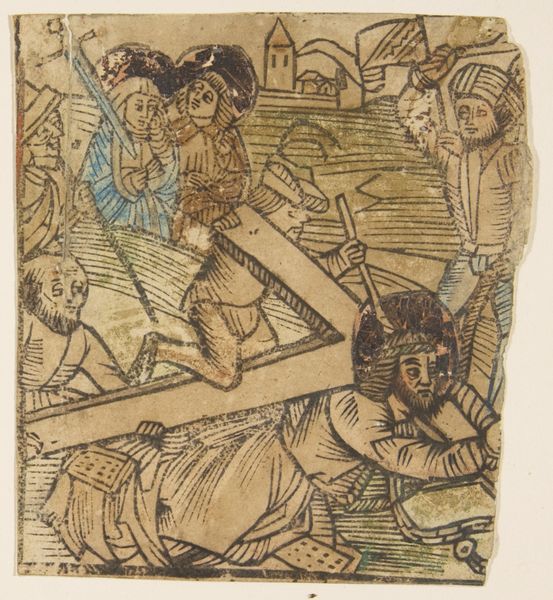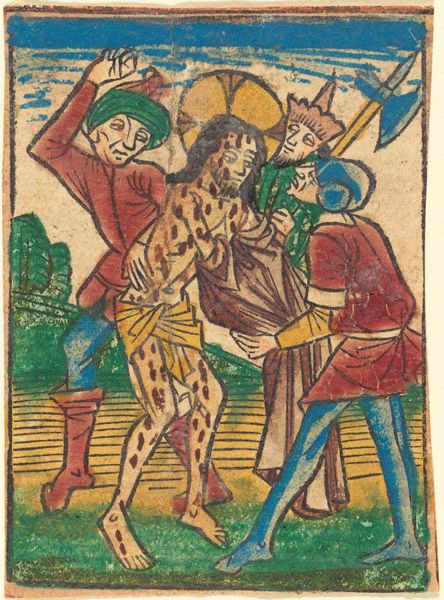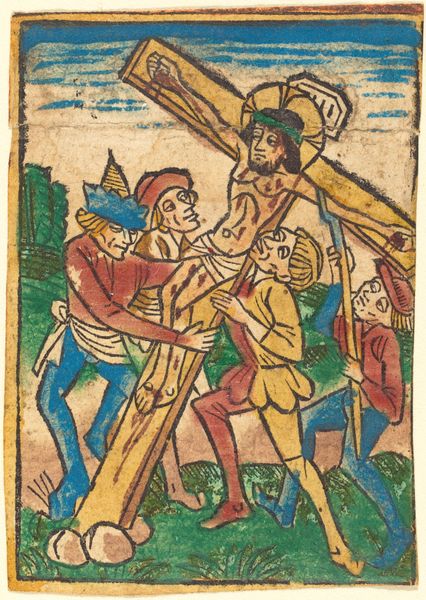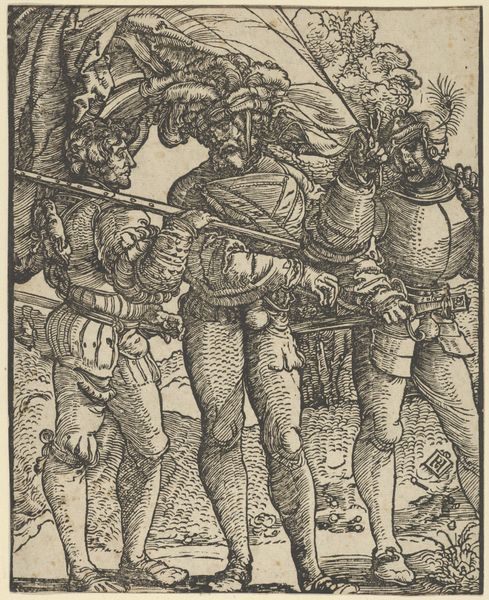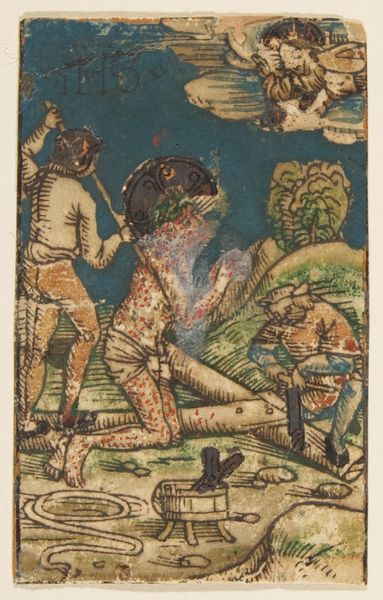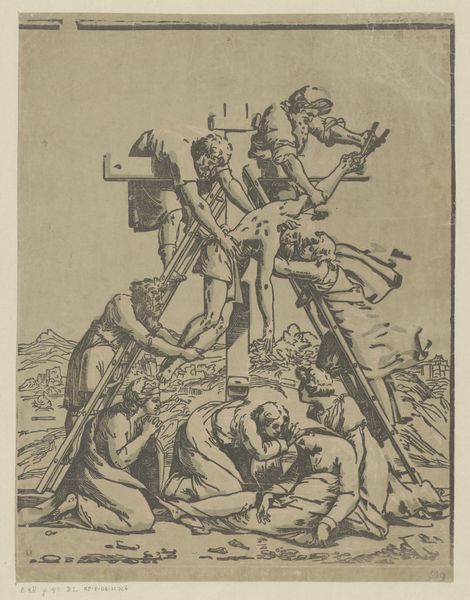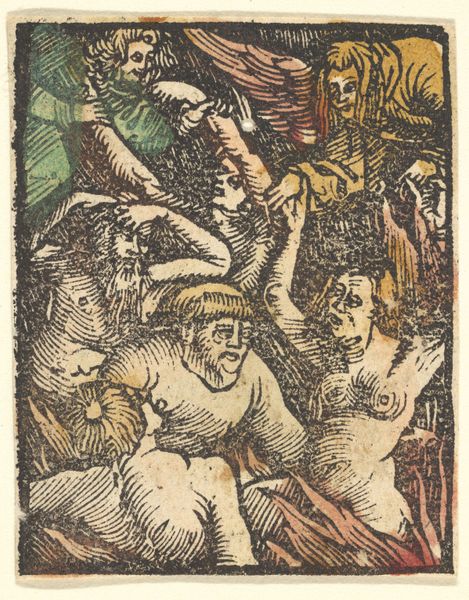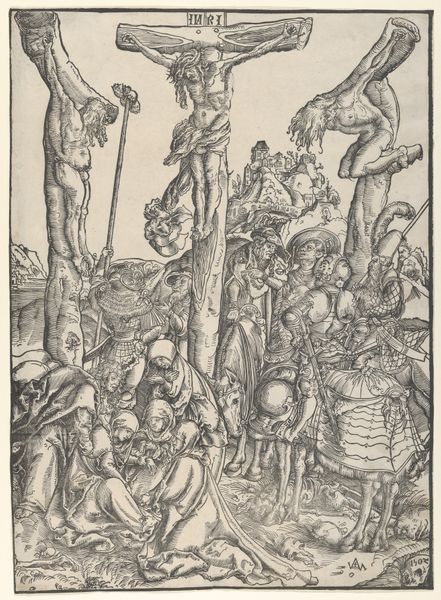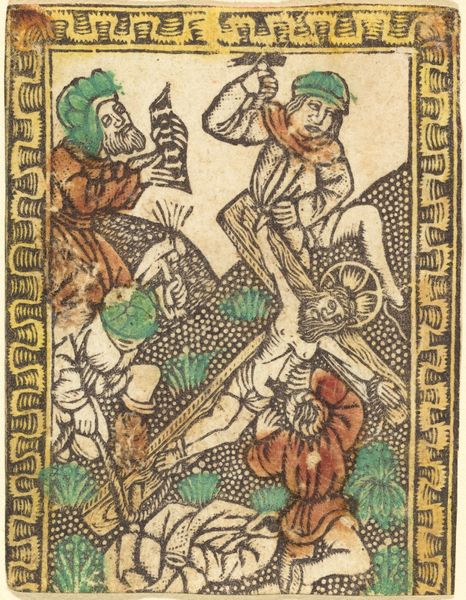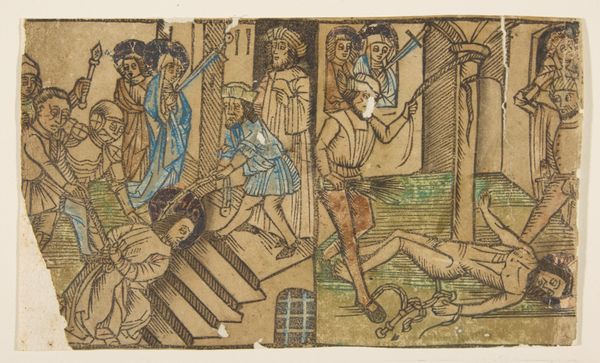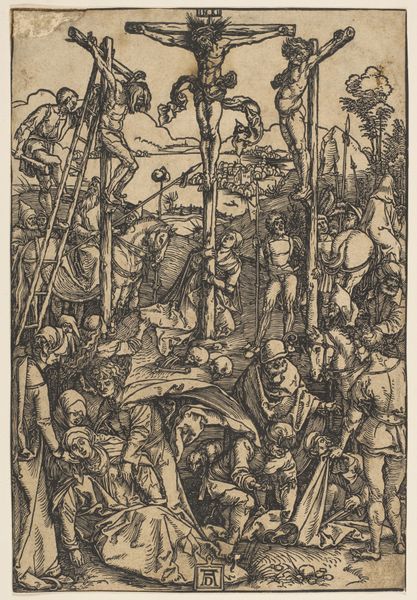
One of the Seven Falls of Christ (Schr. 683) 15th century
0:00
0:00
drawing, coloured-pencil, print
#
drawing
#
coloured-pencil
#
medieval
# print
#
gothic
#
figuration
#
coloured pencil
#
crucifixion
#
history-painting
#
christ
Dimensions: sheet: 4 1/8 x 3 11/16 in. (10.5 x 9.3 cm)
Copyright: Public Domain
Curator: Let’s consider "One of the Seven Falls of Christ," a 15th-century print drawing that resides here at the Metropolitan Museum of Art. I find myself struck by how the artist distills such a monumental narrative into such a compact scene. Editor: My eye is immediately drawn to the rough textures and lines. It gives the piece an almost frantic quality that, although religious, feels grounded in physical labor and exertion. You can practically feel the weight of the cross. Curator: Absolutely, and the piece speaks volumes about the social function of religious imagery at the time. Prints like this, possibly using coloured pencil, circulated widely, offering devotional aids and reinforcing narratives central to medieval faith. This image particularly evokes the physical suffering endured by Christ, aligning with the period’s focus on empathy through identification. Editor: Right, think about the printmaking process. It’s a craft, a labor-intensive method of replication. And each print produced meant that this potent image could be distributed, consumed, and quite literally, handled. How often would its owner have had to engage the piece in devotional practice, or the number of hands that altered and wore at the material over the ages? Curator: And the act of handling and consumption, as you say, is critical! That would create an incredibly intimate experience with the divine story, very distinct from a grand altarpiece reserved for clerical settings. This accessibility reinforces established orthodoxies in a novel fashion. It brought doctrine out of the church and into people's homes. Editor: Plus, look closely at the lines and colouring. The artist's process wasn’t trying to imitate "reality", as a 19th century academic painter would; the coloured pencil evokes something raw, almost elemental, aligning with the direct, emotionally resonant connection people might’ve felt to such an intimate religious experience in their daily lives. Curator: I appreciate you pointing out this focus on affect; understanding this allows us to look deeper at these items. The role that items like this served during the era helps us look further at cultural objects today with scrutiny. Editor: This careful focus and intentional production shows how images had a purpose, outside just decoration. Thinking about what an art piece does reveals new ways to understanding our present world as well.
Comments
No comments
Be the first to comment and join the conversation on the ultimate creative platform.

